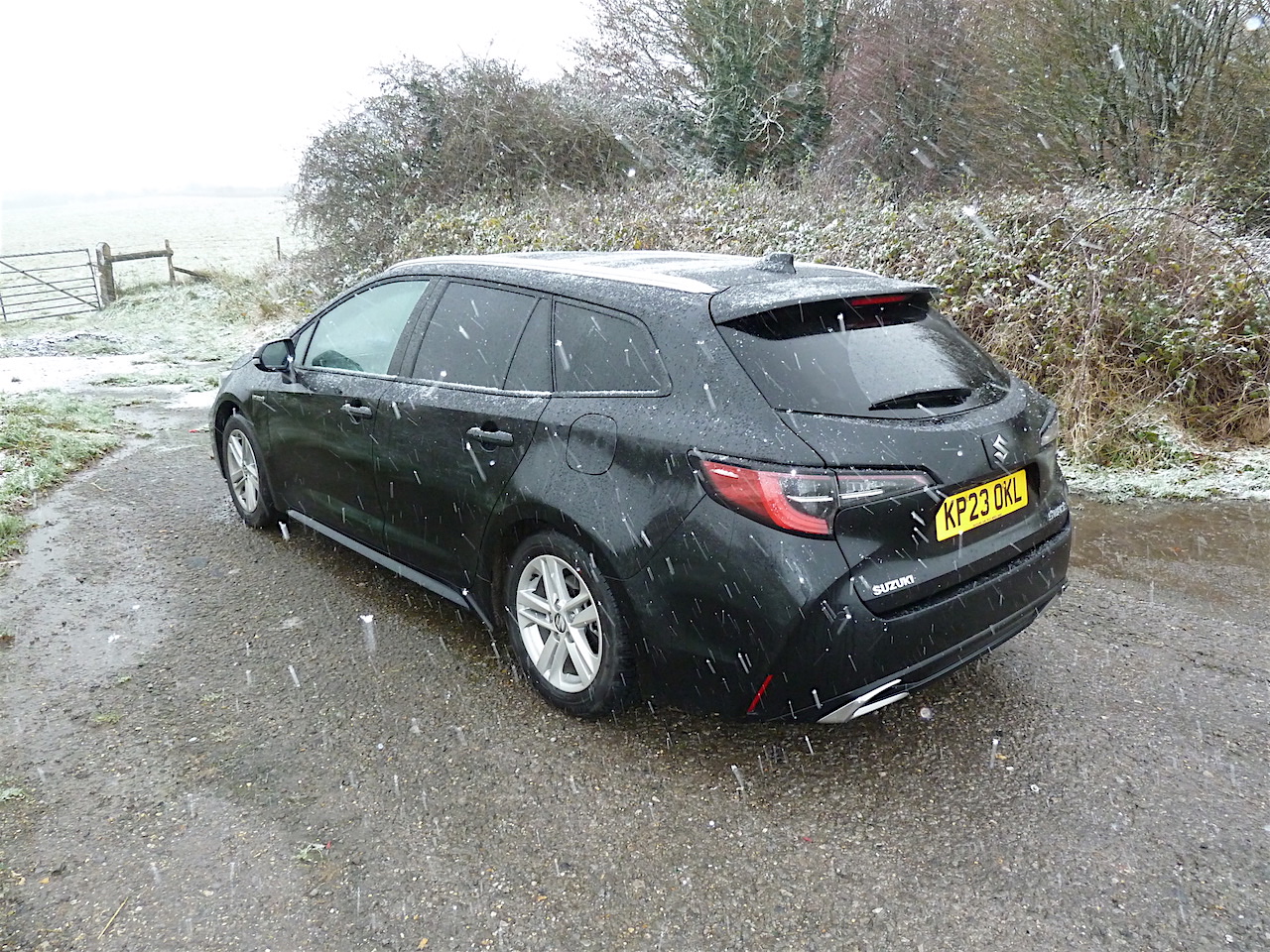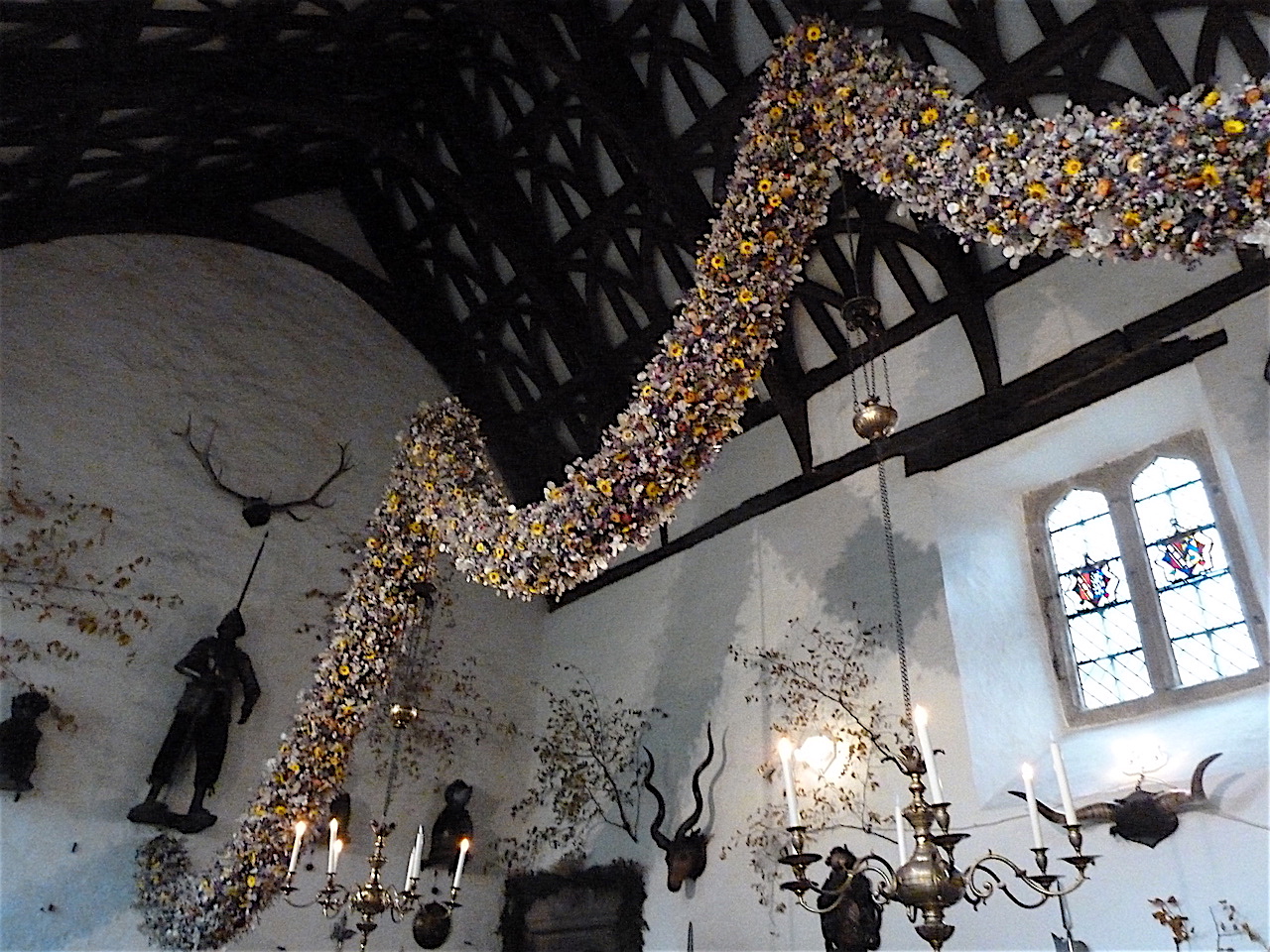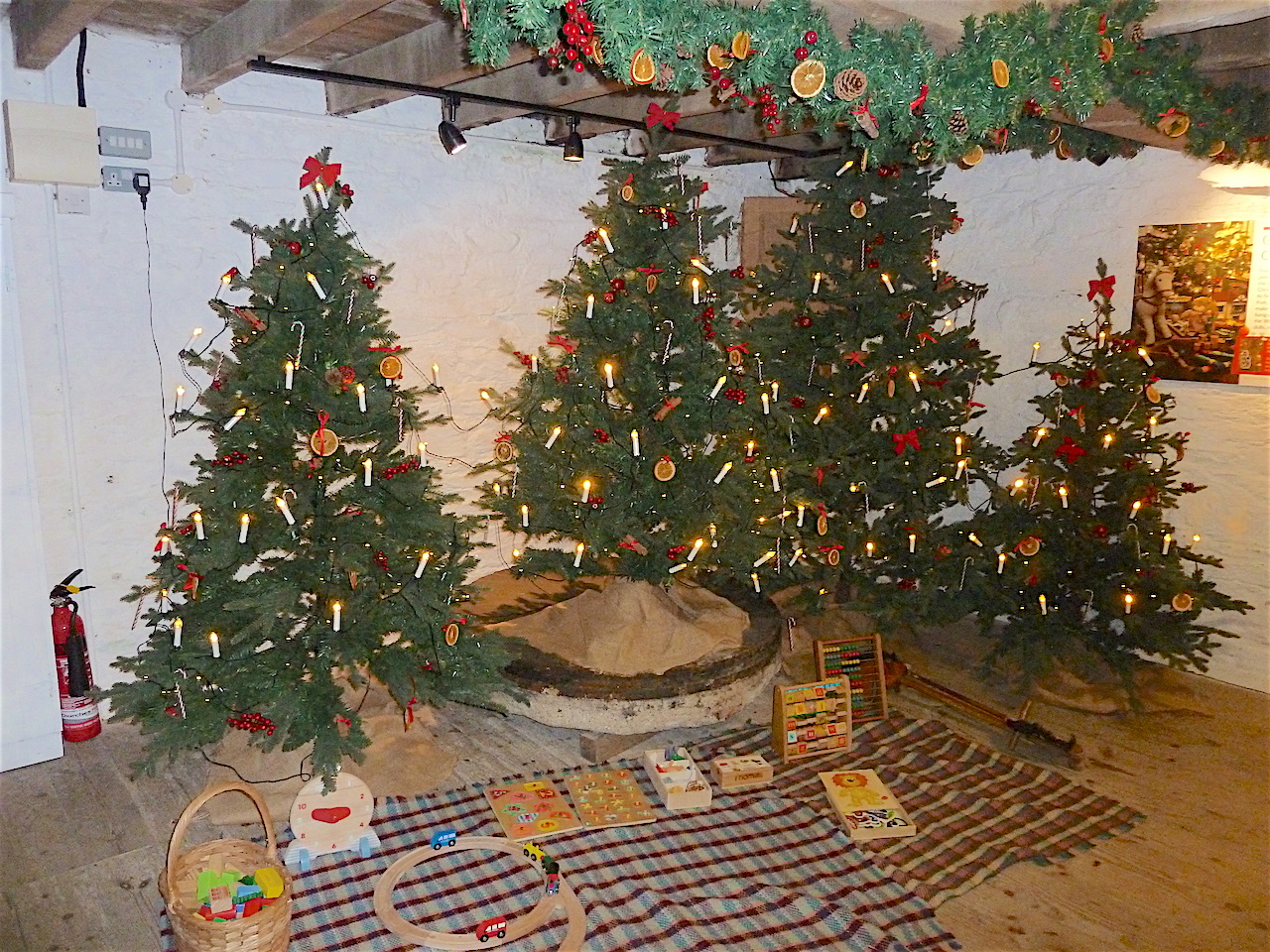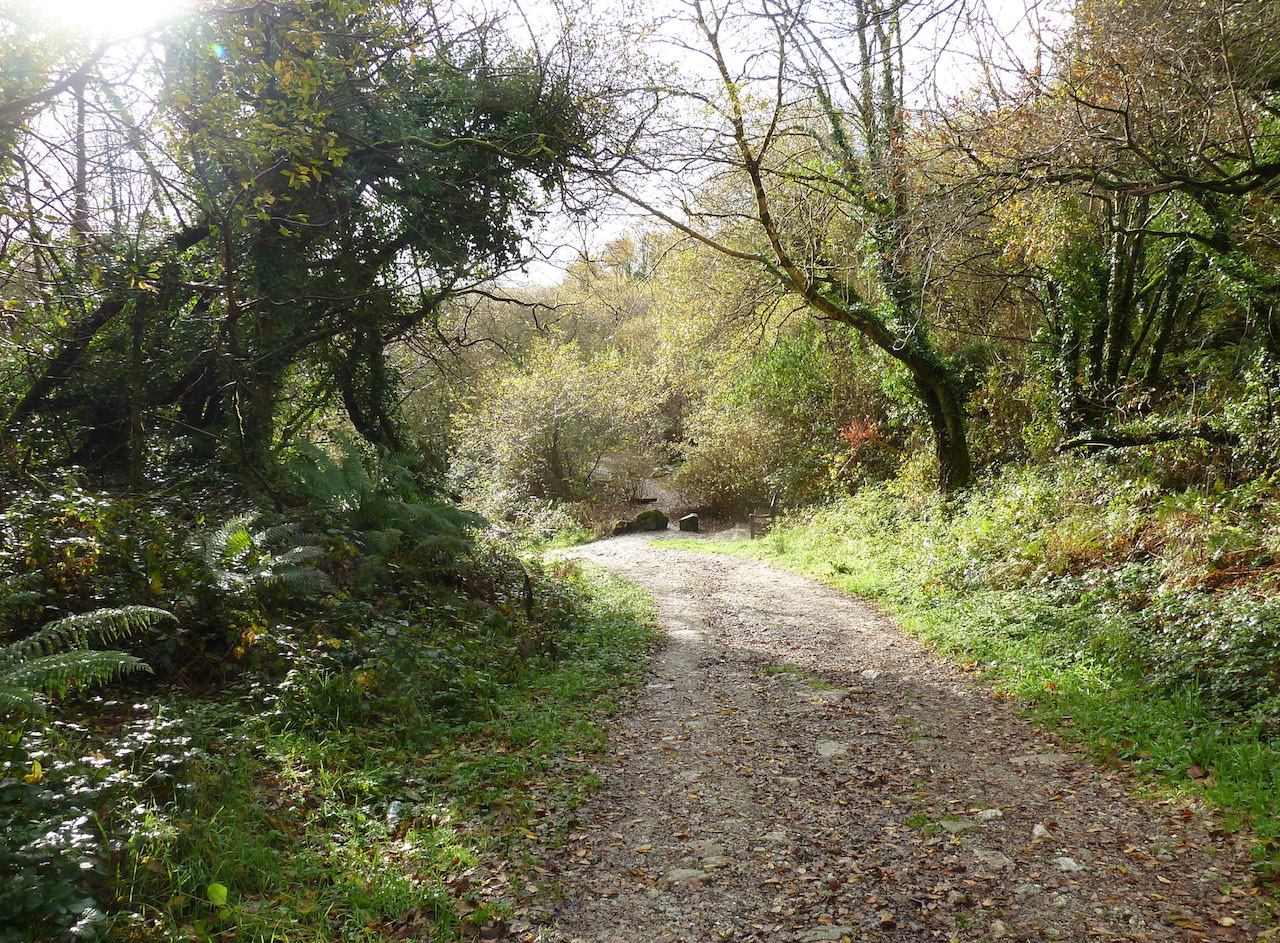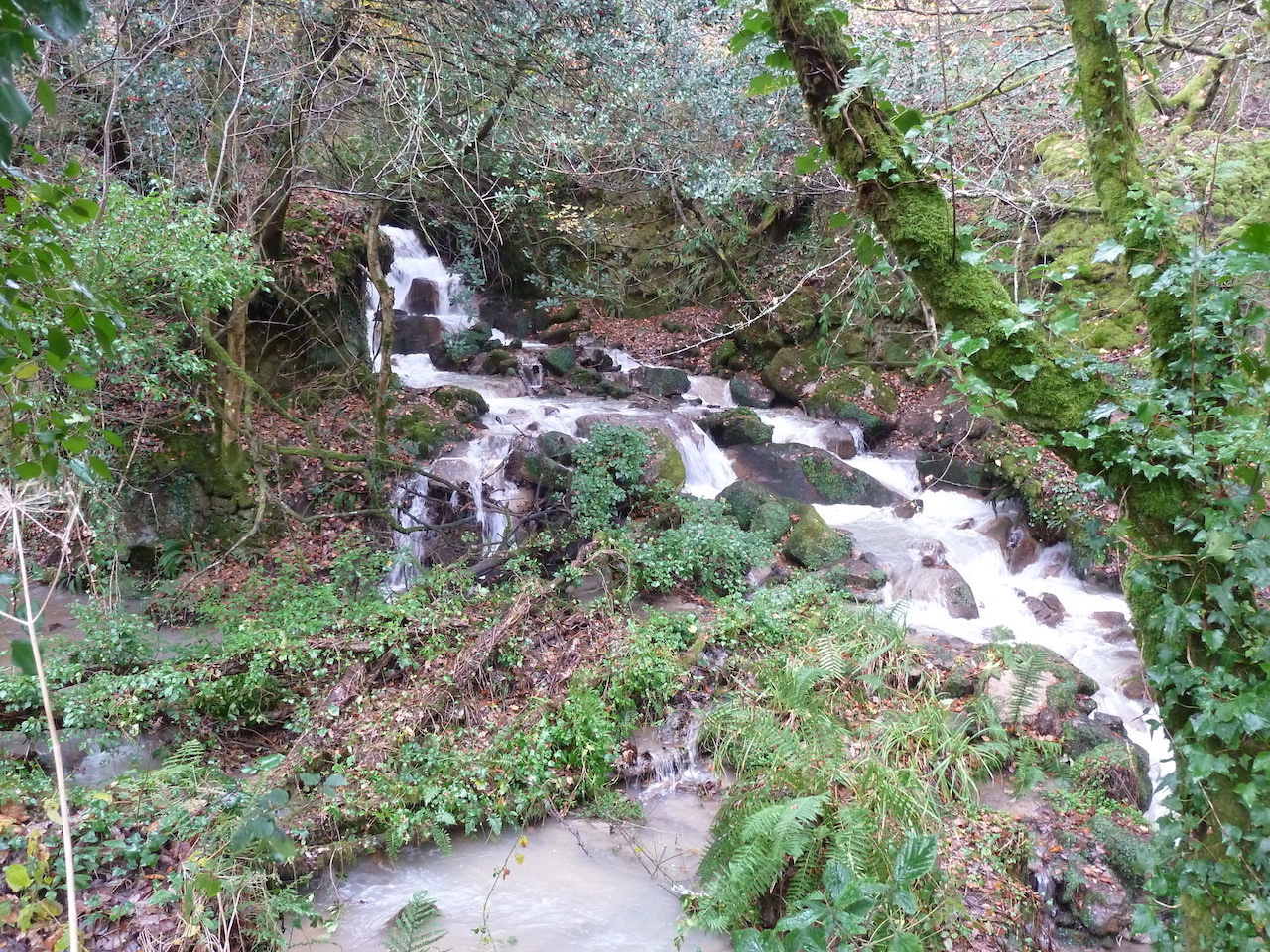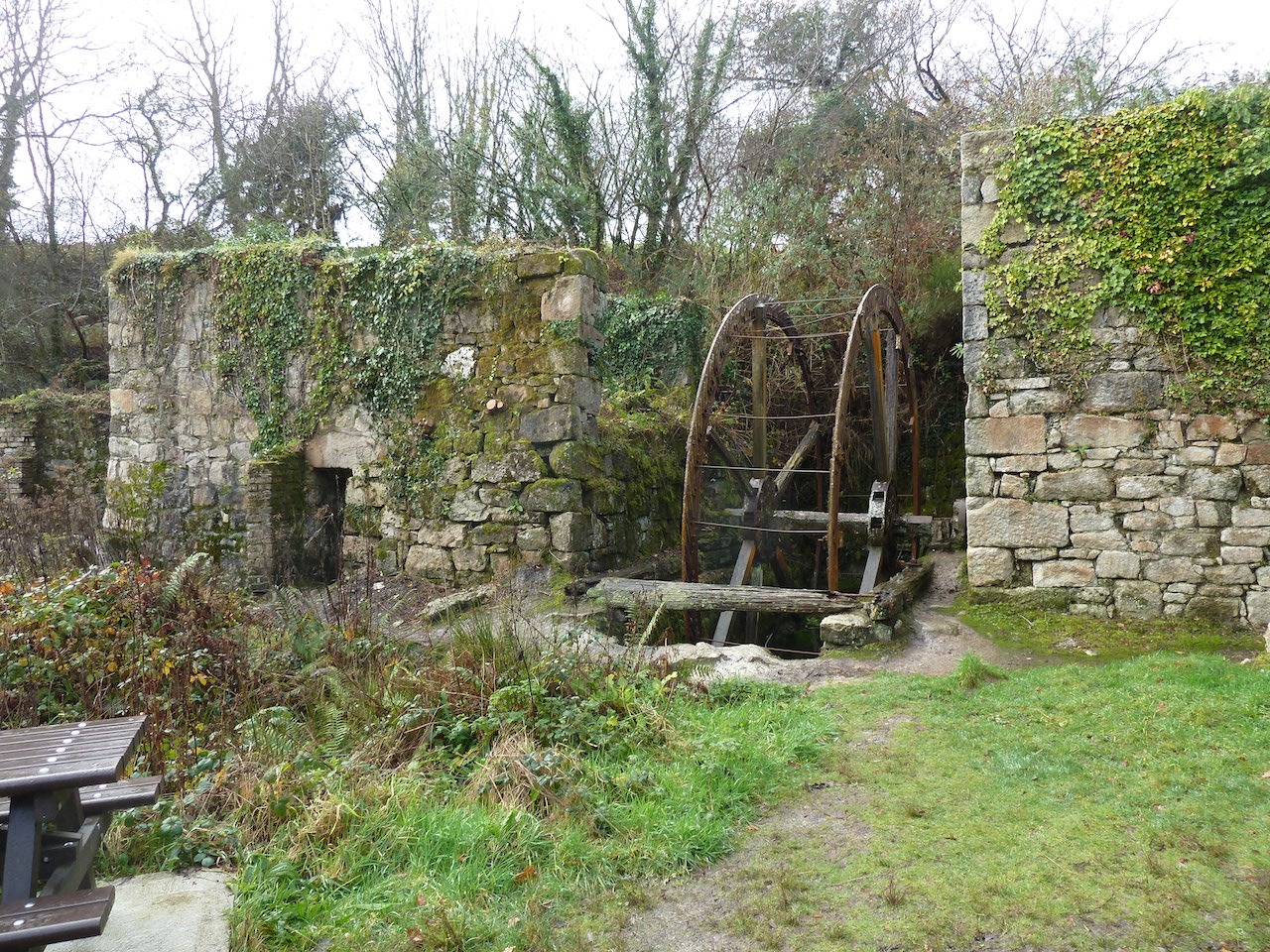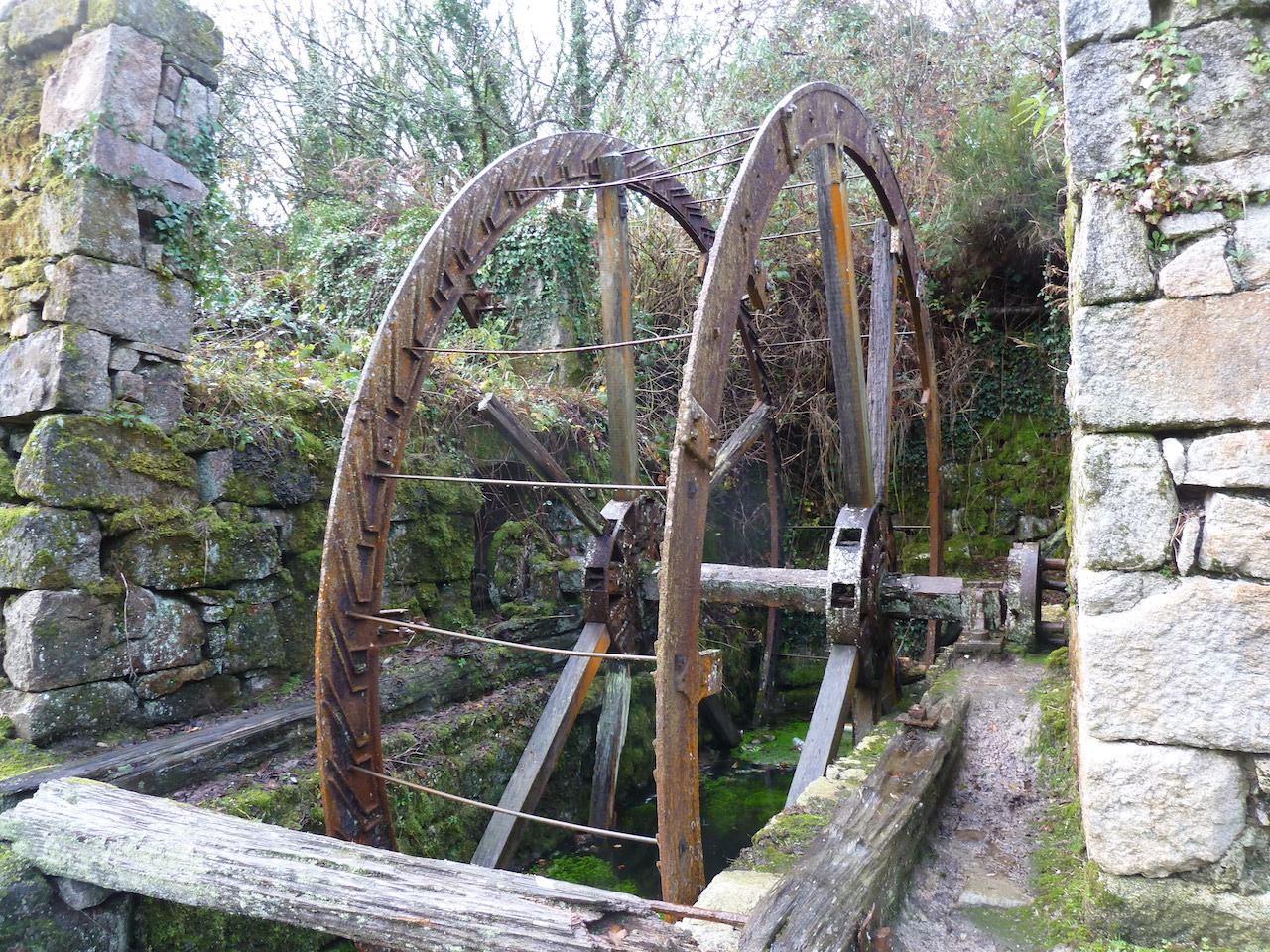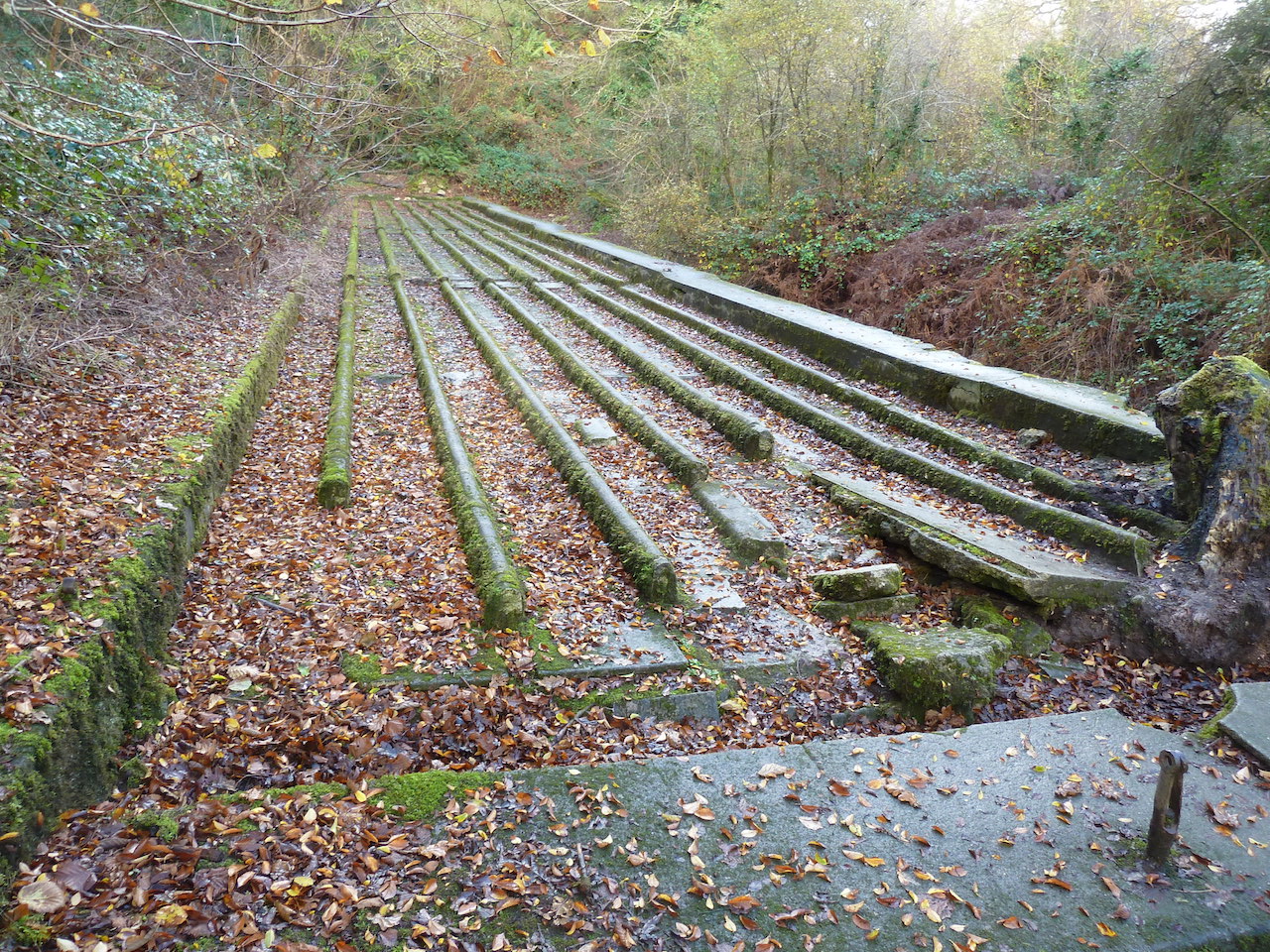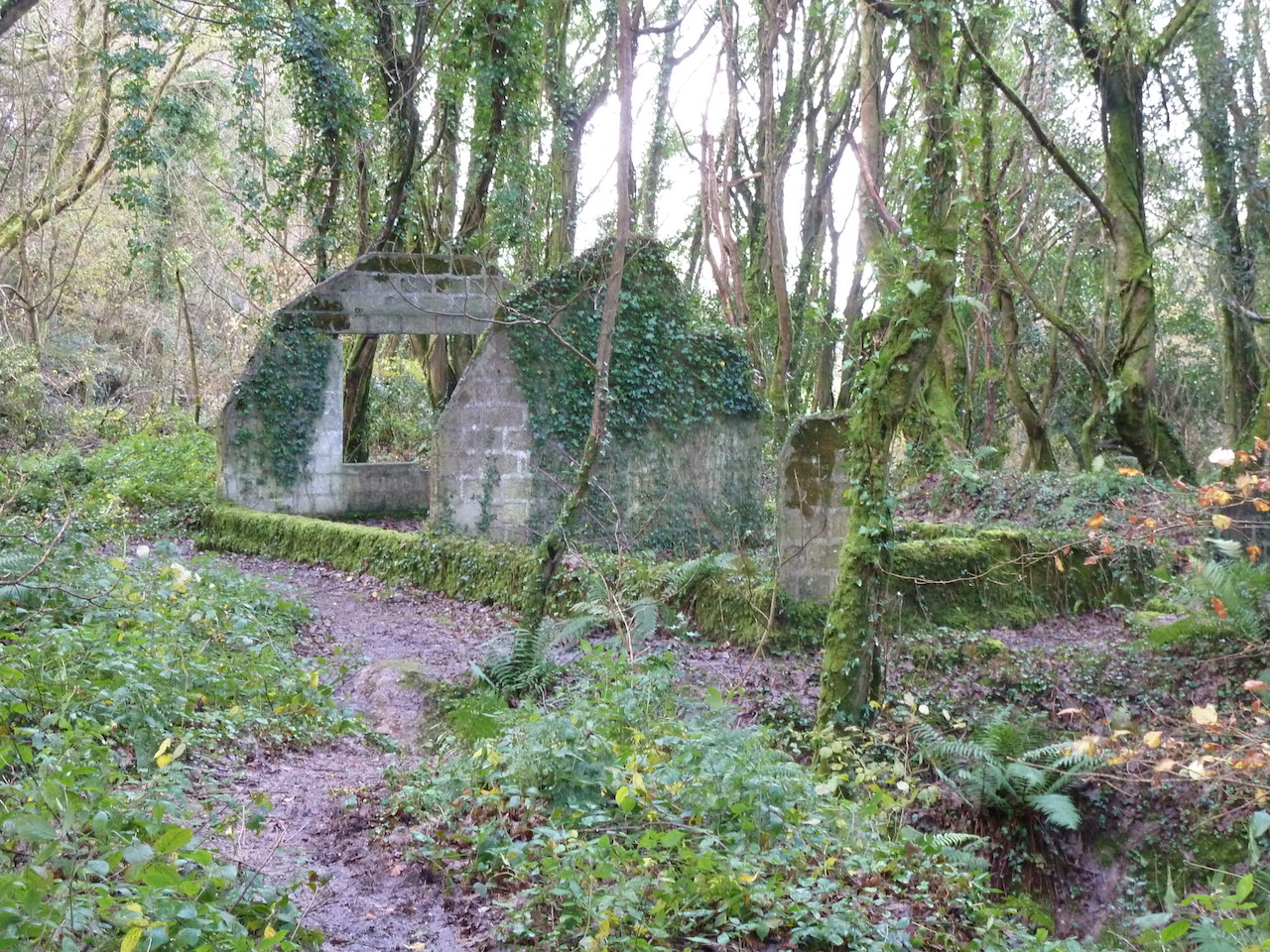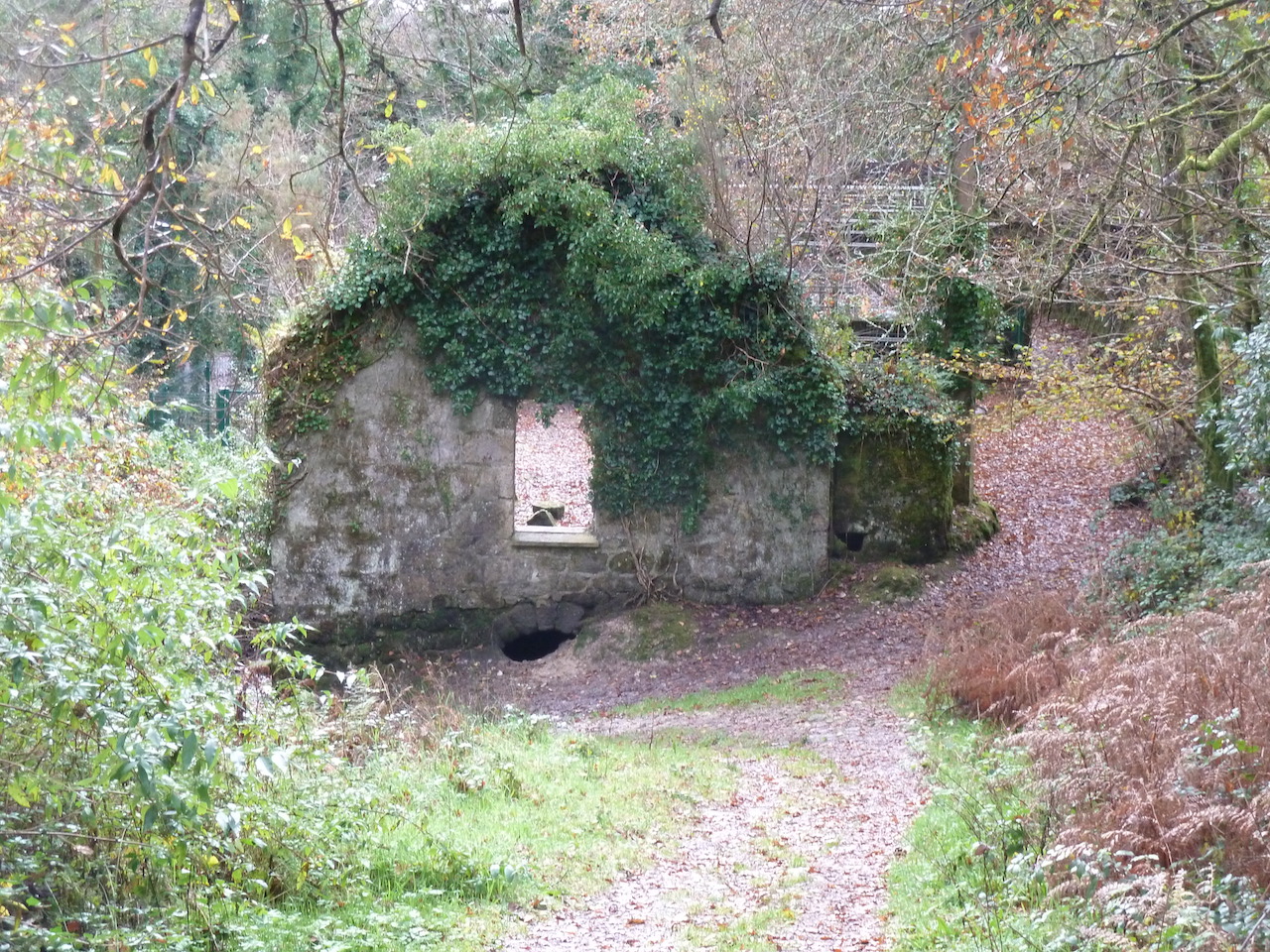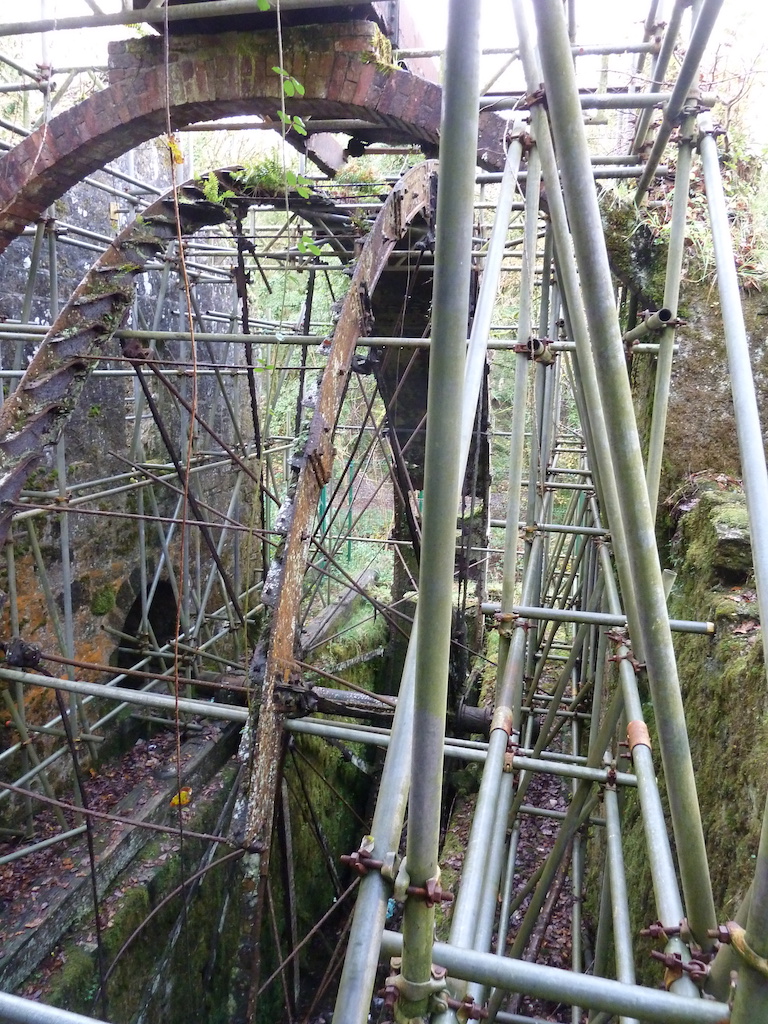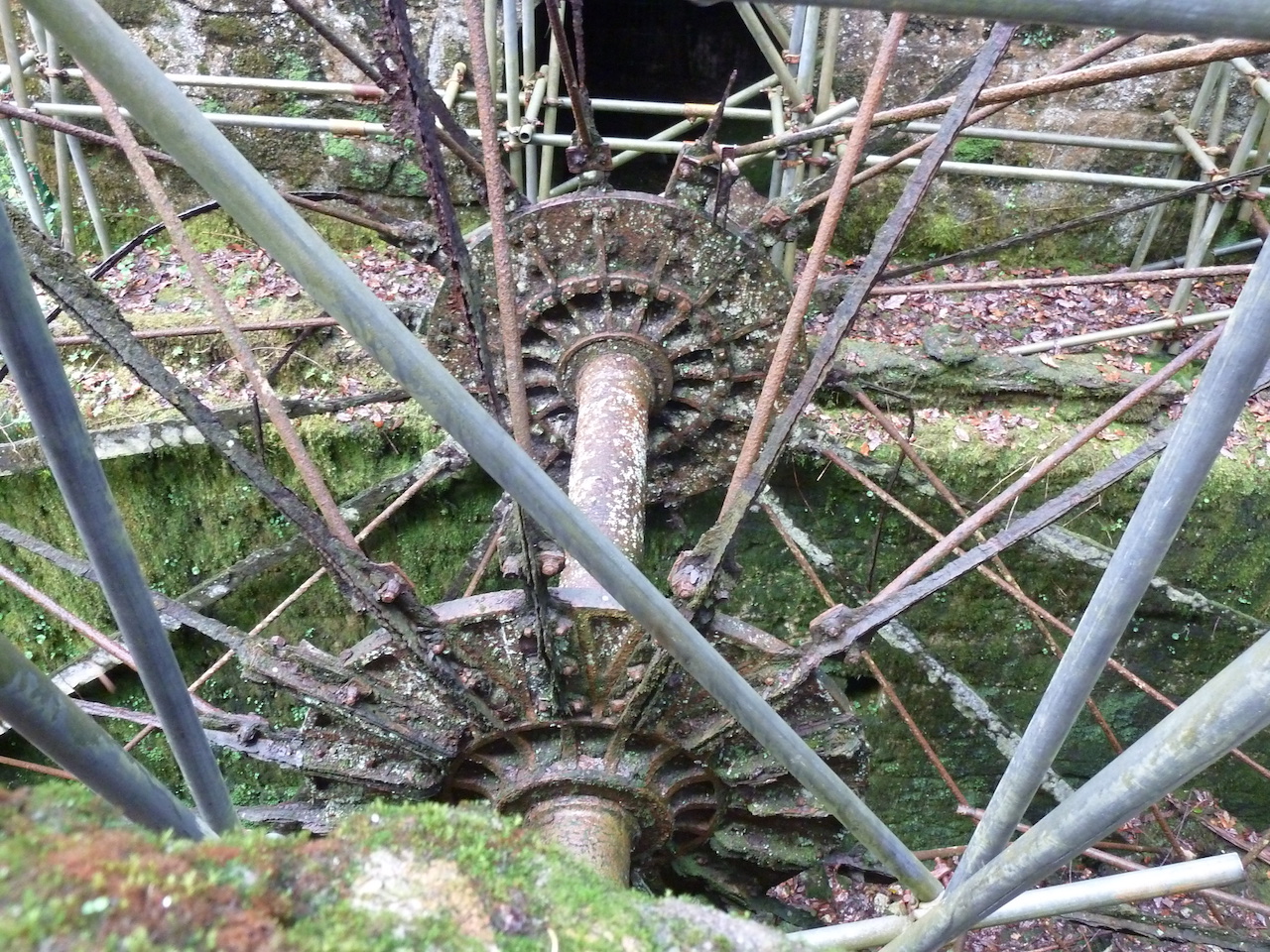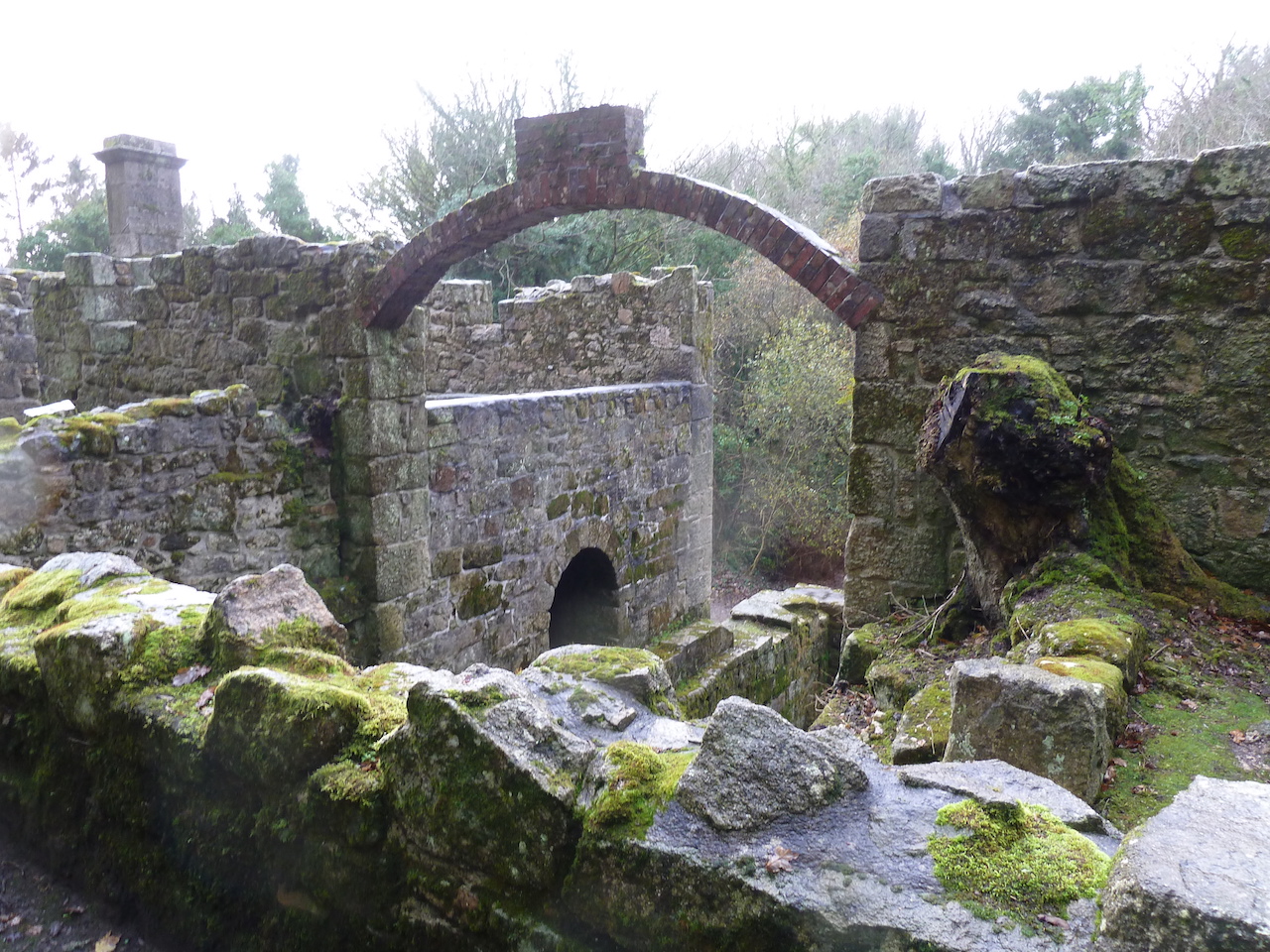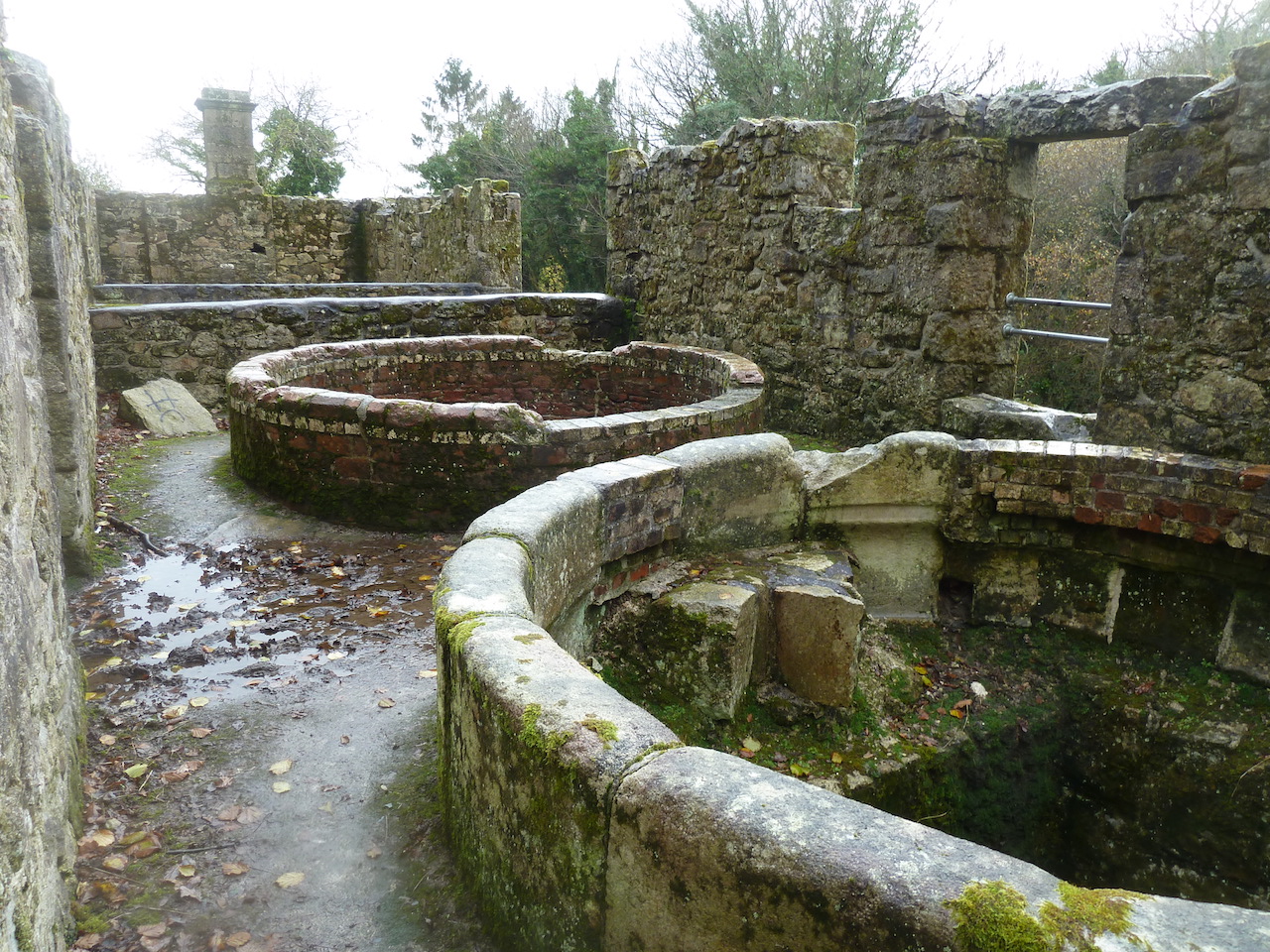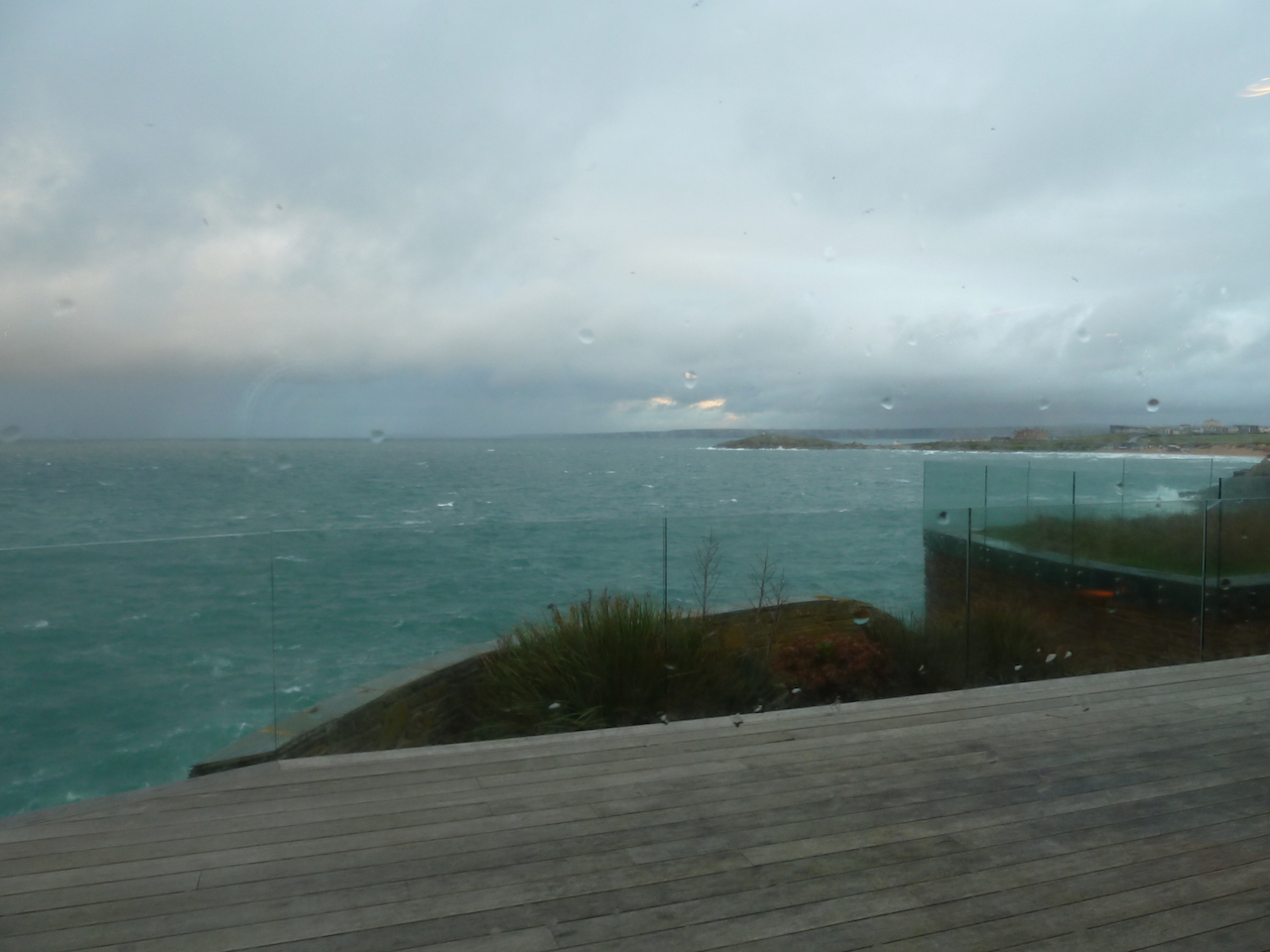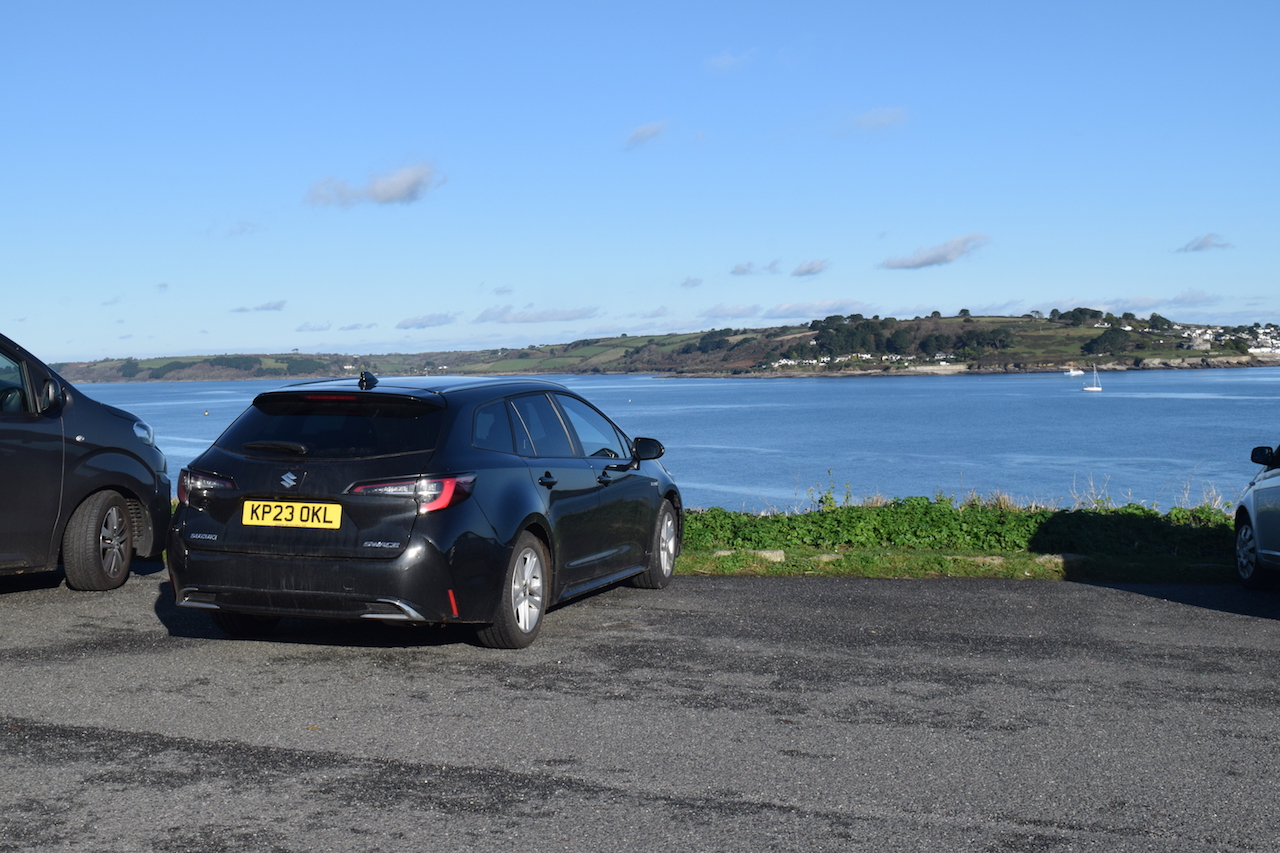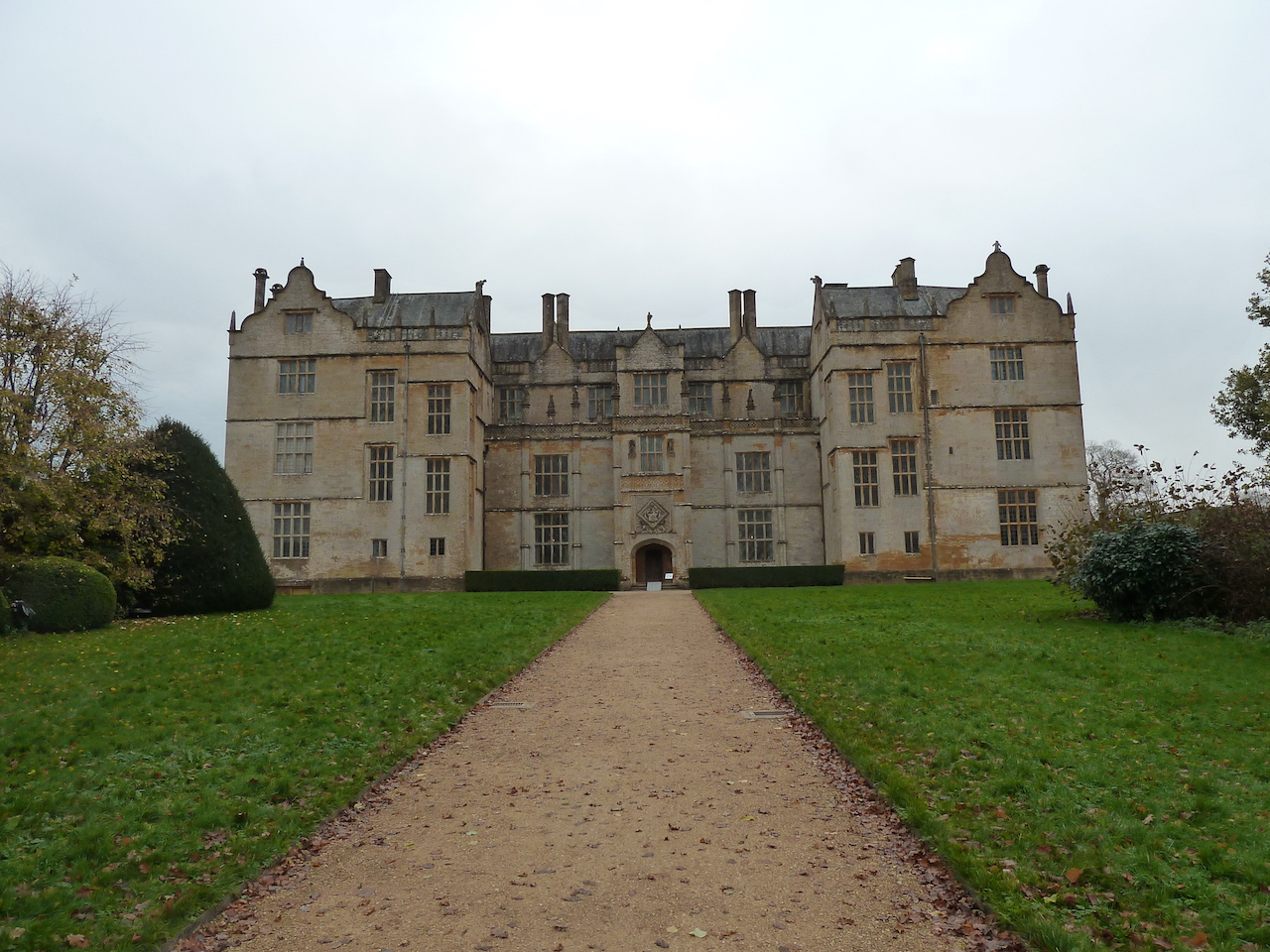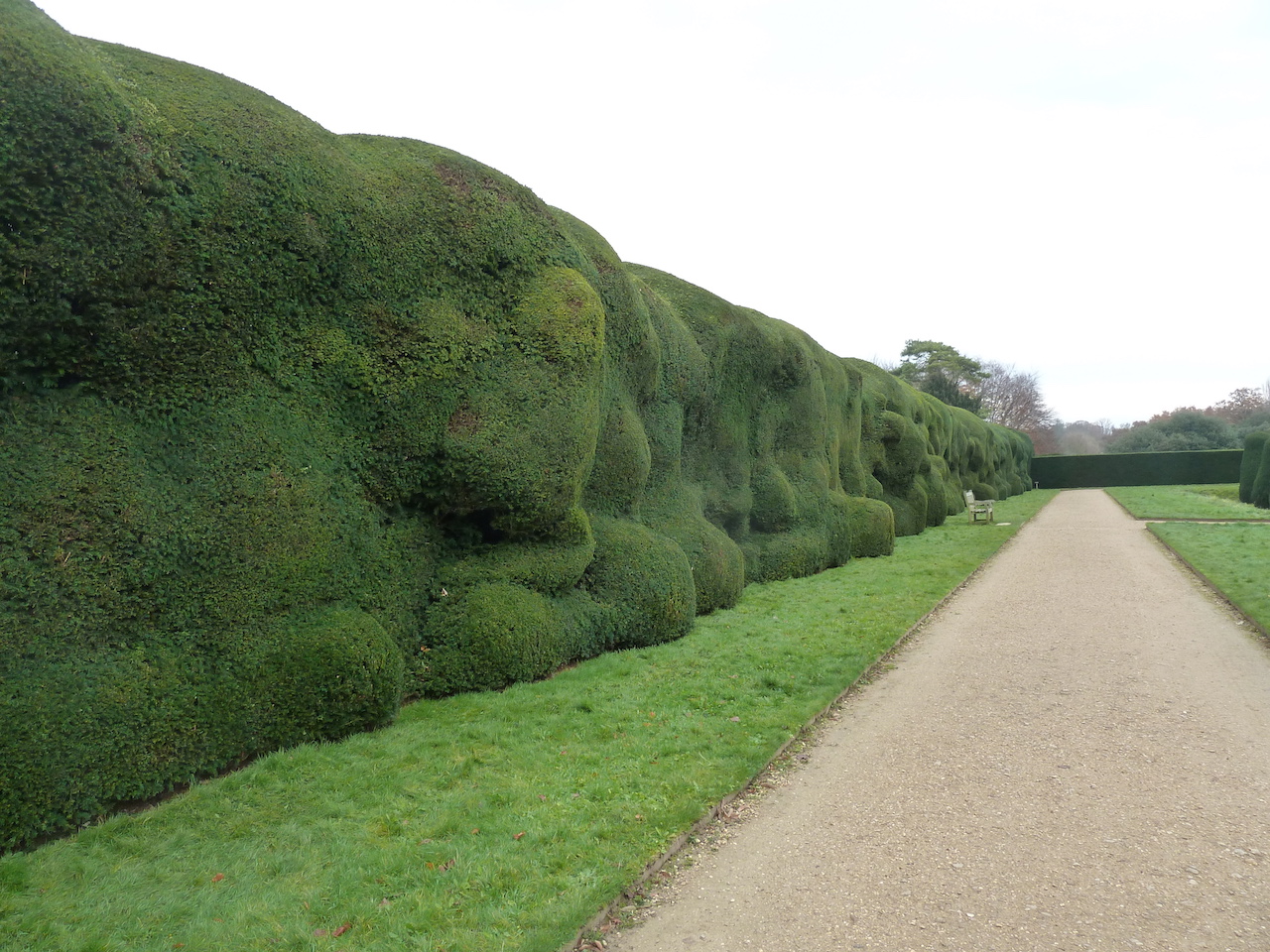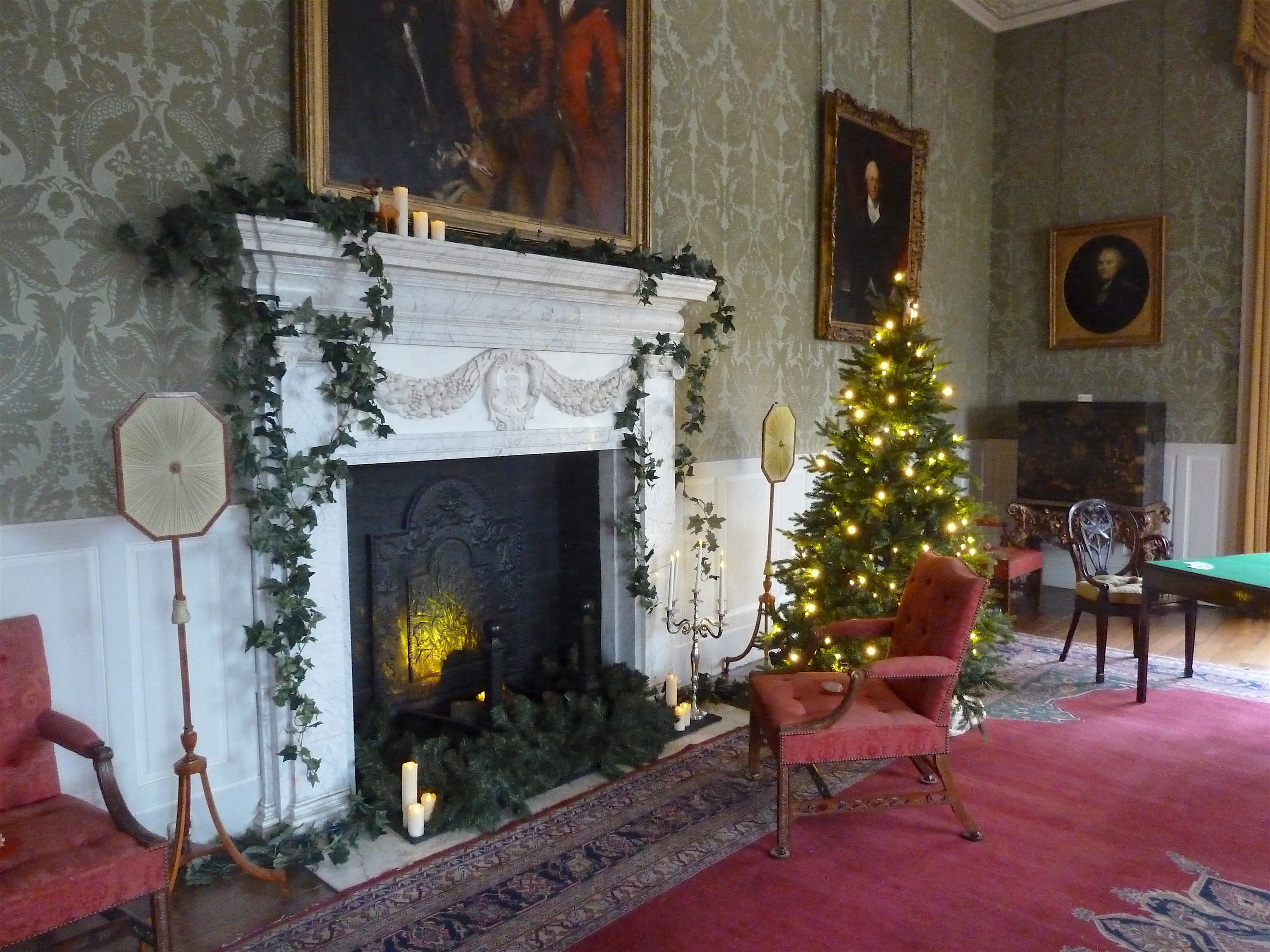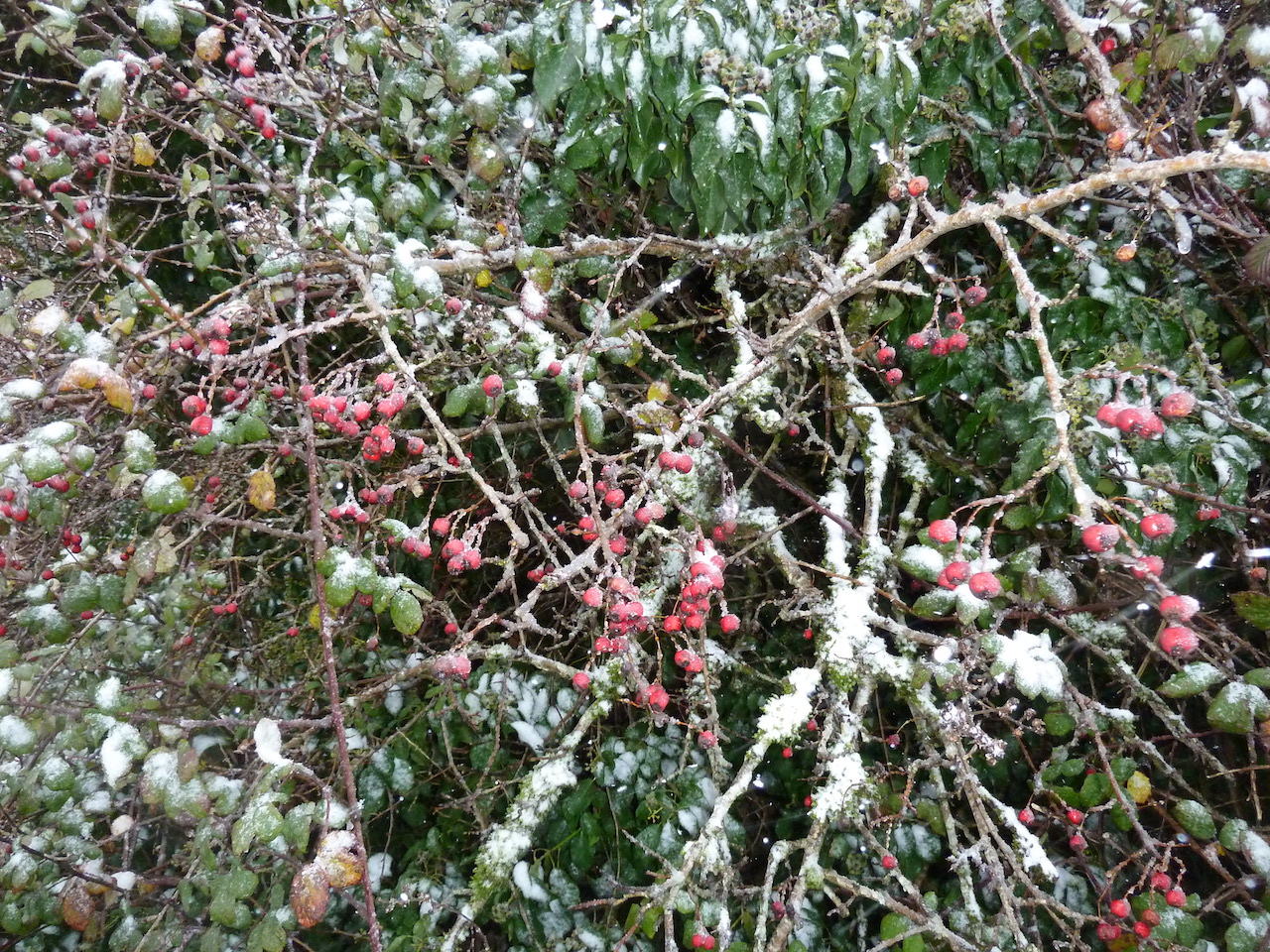Kim Henson tells a true winter’s tale.
(All words and photographs by, and copyright, Kim Henson).
Cornwall beckoned, but our trip had to take in Swindon and Montacute as well…
After a busy year during which my wife and I had been obliged to postpone two separate breaks in Wales, the idea of a few pre-Christmastime days away in Cornwall to unwind was very appealing. In fact, our planned four night stay was to be our 2023 holiday.
However, things became a bit more complicated when the date for a work-related function near Swindon was announced – to take place at a time when we were already pre-booked to be west of the Tamar River! No problem, we shifted our four night hotel booking in Cornwall to take place a few days later than originally planned.
We then realised that in order to fit in the Swindon and Cornwall aspects according to our revised timetable, this meant that at the end of our Cornish excursion we would have to travel directly from Cornwall to Montacute, near Yeovil, for an annual festive get-together with friends. Therefore our planned few days in Cornwall expanded into seven consecutive days away, covering three different locations! All the same we were looking forward to our festive ‘adventure’, and already knew that the Christmas decorations in Devon and Cornwall are usually very well done, always cheering to see.
We set off from our Dorset base in a Suzuki Swace estate test car (‘Ultra’ version), which I have recently featured in a full road test; if you are interested in reading this, here’s the link… latest-version-suzuki-swace-estate-car-road-test/
We try to ‘escape’ to Cornwall about twice every year (I am not Cornish but love the county), and the distance from our home to the small town of Lostwithiel, where we sometimes stay and which we love, is about 150 miles. However, on this occasion we had to factor in an additional northerly leg to near Swindon (about 90 miles), then a further 185 miles or so the next day, to Lostwithiel. So 150 miles became 275, but the Swace, with its huge luggage compartment fully packed, effortlessly and economically clocked up the miles.
After a happy evening and overnight stay near Swindon, I headed the Suzuki along the M4 westwards towards Bristol and then south-westwards down the M5, around Bristol and Cornwall-bound through Somerset and Devon. The weather was kind to us as we enjoyed a pleasant journey with sun-bathed countryside all around us, plus distant views of the south Wales hills/mountains on the opposite side of the mighty Severn estuary.
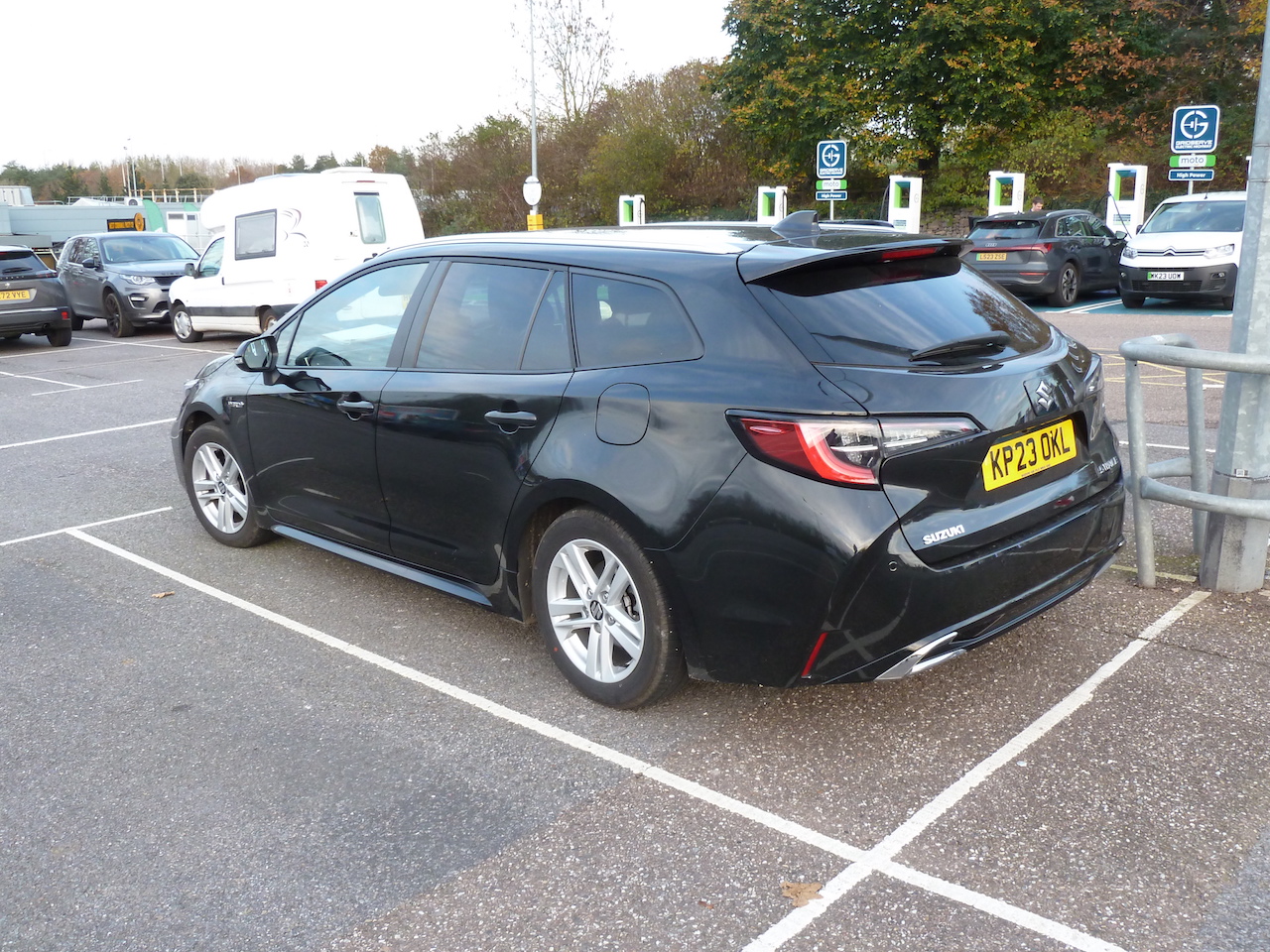
We easily reached Bodmin by early evening, enjoying a pub meal before continuing the last few miles of our journey to Lostwithiel.
Cotehele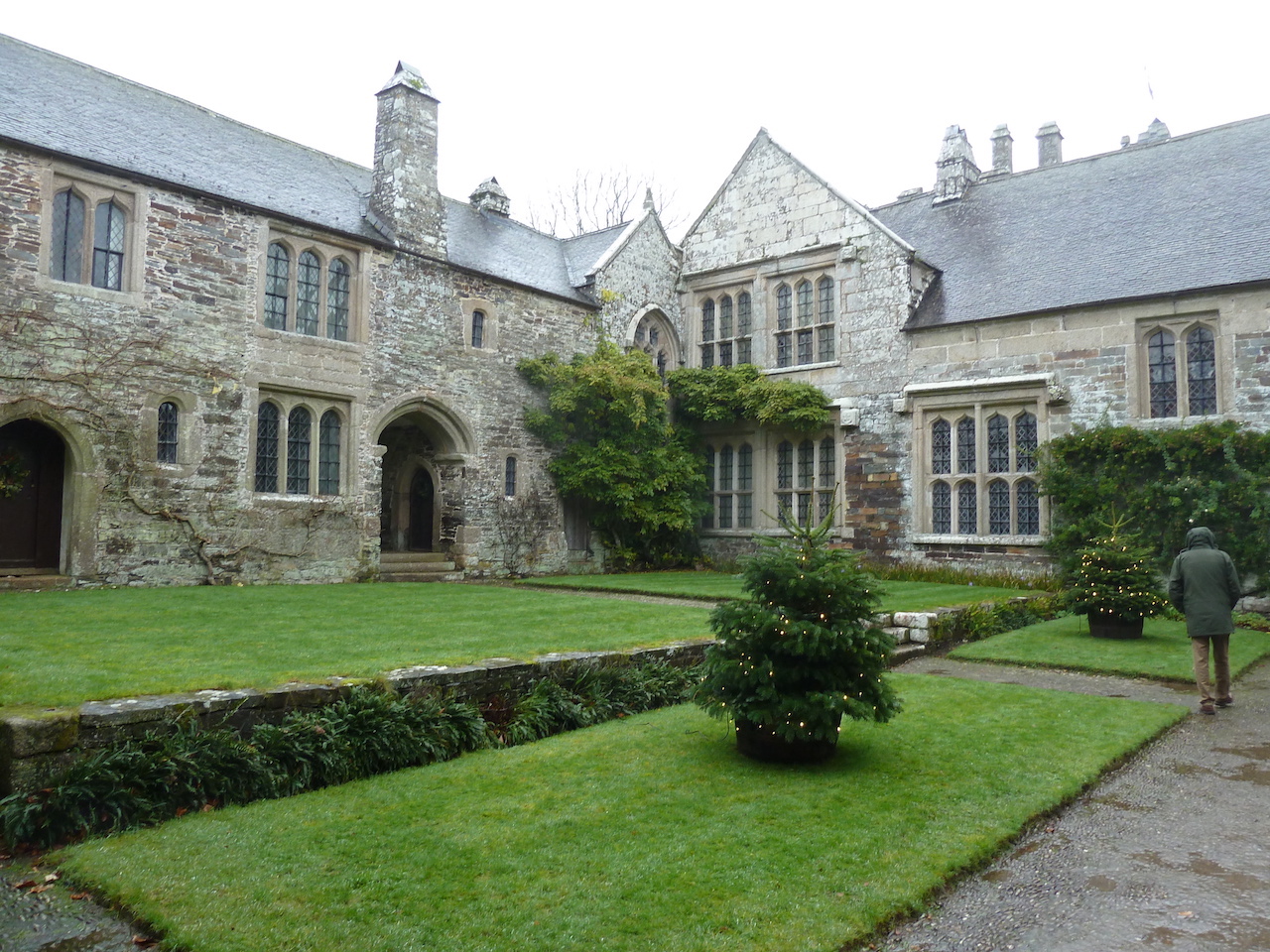
The next day it rained all day, but we met up with Cornwall-based members of our family and despite the weather went to the National Trust venue of Cotehele, near Saltash. This is a lovely property, comprising a fascinating house, an old flour mill and comprehensive gardens, all situated on/near the west bank of the River Tamar. On a clear day there are spectacular valley views from the house and gardens.
From 1353 Cotehele was the ancestral home of the Edgcumbe family, and it remained in their ownership until 1947, when Kenelm, sixth Earl of Mount Edgcumbe, passed it into the care of the National Trust.
Since the late 1950s an annual pre-Christmas occurrence there has been the assembly and presentation, in the main hall of the house, of a huge floral garland. This is different each year, and takes most of each year to plan and put together. It certainly makes an impressive sight when on display.
We also liked looking around other ground floor rooms of the house, notably seeing the kitchen areas and learning about the types of food that would have been on offer there many centuries ago. Many of Cotehele’s original plates, kitchen utensils, etc, are still there; amazing.
While at Cotehele, after lunch in the café we looked briefly at the rain-soaked gardens (which are beautiful on sunny days), then walked along the river bank and took an illuminated path to Cotehele Mill (not open every day in the winter; please see the Cotehele National Trust website page).
The water wheel powered Mill has long been used to produce flour (although at the moment the water wheel cannot be operated) and the buildings adjacent to the Mill incorporate a bakery plus traditional workshops. Here there’s much information available about past activities (including other industries) at the site, plus pre-Christmas ‘things to do’ for younger members of the family. We enjoyed spotting the various ‘reindeer’ in the vicinity and along the illuminated path, all made from natural materials; very clever.
The Christmas trees and other festive seasonal decorations within the Mill buildings were great to behold.
Tregargus Valley
The following day, during breakfast at our base of the excellent Fowey Valley Hotel (Best Western), and with no set agenda for our day, we were told of a ‘hidden’ valley that we had never heard of. This is the industrial Tregargus Valley, just north of St. Stephen and not far from St. Austell. (St. Stephen village is on the A3058, the main road running between St. Austell and Newquay).
Here the china stone industry was operating from around 1870 until 1965. The Tregargus Valley was a major centre for the extraction from the ground, and processing, of china stone. The refinement of the stone to a fine powder took place within and around a variety of purpose-designed buildings, and notably including several water wheels (one large, one ‘medium’ size wheel remain); all the industrial activities within this area were powered by water.
The granite-derived china stone could be milled to a very fine texture, and formed the main ingredient for the production of porcelain.
(Of course the wider St. Austell area of Cornwall is famous for its multitude of china clay mines).
The substantial remains of the valley’s buildings and indeed two of the water wheels are still on site to be explored and marvelled at. HOWEVER, CAUTION IS NEEDED, ESPECIALLY FOR CHILDREN, AS THIS IS AN OLD INDUSTRIAL SITE WITH MANY POTENTIAL HAZARDS INCLUDING UNFENCED DROPS, DEEP WATER, UNEVEN GROUND, PLUS EXPOSED METAL AND BRICKWORK ETC. TAKE CARE!
I am very interested in ‘industrial archaeology’ so this was a place I was keen to visit.
I should mention that while access (which is free of charge) to the valley is possible from the village of St. Stephen, we were advised that it is preferable to park in a lay-by on the left-hand side of the minor road running from Nanpean to St. Stephen (if driving from Nanpean). This road is found to the north of the valley site, and by walking through a ‘kissing gate’ at the edge of the lay-by, you enter the beautiful wooded valley from the highest point and can walk down through it.
This we did (the site is easily found using instructions/maps available on the internet), and were amazed at the hidden ‘treasures’ that we found, and that cannot be seen from the road.
The walk down through the valley is perhaps a mile long; most of it is on fairly level ground on a gravel-surfaced path, but there are some steep slopes towards the lower part of the area. However it’s well worth making the effort to explore, and I suggest allowing at least half a day to do this. (By the way, there is no café and there are no toilets on the site).
The time-ravaged old buildings have no explanatory notice boards, but at the entrance to the valley from the north (the way we entered it) is a useful signboard giving much information about the various buildings encountered as you walk through the site.
(Kim’s Tip: I found it useful to photograph this board and refer to the image while exploring).
Even before reaching the first buildings, one can hear the roar of a waterfall that cascades down the hillside, through the trees on the left-hand side of the path, and this is impressive in itself. Of course when the valley was in working mode (and providing employment for many people in the area), the power unleashed by the volume of water in the river as it descended through the valley, enabled the water wheels to rotate and the mill machinery to operate.
Quarries and mills were operational in the valley from around 1870, complete with relevant buildings, tramways/trackways and a system of leats (artificial troughs) to supply the water wheels.
The remains are said to represent the finest collection of stone mills in western Britain; indeed they are of national importance.
Through the steep-sided, tree-line valley runs the Barn River, ever-present and still winding its way around the buildings and water wheels that it used to serve, although sometimes hidden from the pathways (yet always still audible).
A little further down the valley, on the right-hand side, is the ‘Wheal Arthur’ china stone mill, remarkably with its water wheel still largely intact. Its buildings’ walls are still standing (sadly, roofless), and you can still see the chimney plus the remains of the driers. The grinding pans were once protected from the elements. (Note: Originally the mill was connected to the Wheal Arthur quarry by a tramway).
As the path meanders gently downhill, it passes by (on the right-hand side) the Rescrowtha china clay pit and mica drags. Through these shallow linear troughs, water containing mica, sand and clay passed; the mica and sand were heavier than the clay and so were separated from the clay, which was left within the liquid.
The path starts to steepen as the Tregargus stone quarry is passed (on the right-hand side); these days it is a picnic area with great views across the countryside.
Within the trees to the left are the remnants of many buildings, including the blacksmith’s shop.
To the right-hand side, immediately adjacent to the fast-flowing river, is the Big Wheel Mill, a fascinating set of buildings, within which the huge wheel itself (30 feet or about 9 metres in diameter) is mounted. It has deteriorated substantially over the years, but the clever design and construction of the wheel hub, its spokes and associated components can still be seen clearly.
(Kim’s Tip: If you are interested, have a look on the internet to discover thought-provoking photographs of the water wheel and buildings when they were being constructed/in use, together with the men who worked on them; many of these images were taken about 130 years ago).
A little further down the valley, on the left, can be found the Trevear Mill and miller’s cottage. The mill has not been used since the 1930s, but the miller lived in his cottage until 1974.
Towards the lower end of the valley, close to St. Stephen village, are the remains of the Lower Tregargus mica mill, where at one time a water wheel some 22 feet (about 7 metres) in diameter operated; today it has long gone.
We found the Tregargus Valley, now cared for by a charitable organisation (Tregargus Trust), to be a very atmospheric and fascinating place. As we walked among the ruins, gradually being reclaimed by nature, I was trying to imagine what the place must have been like to see and to hear, in its heyday. I feel that it is wonderful that it survives to remind us of days gone by, and I’m so pleased that we were told about it.
If you are interested in finding out more, as mentioned previously there is much on the internet. Some pages that I found especially interesting and helpful are at: https://cornishbirdblog.com/discover-tregargus-valley/
Newquay and Pentire Head
From St. Stephen we joined the A3058 and drove towards Newquay, eventually branching off toward Pentire Head, just to the south-west of the town. We had been told of Lewinnick Lodge, a restaurant/hotel on the headland, with fantastic views across the sea and the town. We found this a very welcoming stop, with helpful and friendly staff, and from within the warm building we enjoyed a Cornish cream tea and a cuppa while watching rain-swept and wind-blown waves far below.
Of course, in the summer time Newquay is a very busy place, but during the winter it is relatively quiet and we were able to drive around the area quite easily.
Falmouth and Pendennis Head – and westwards
Confession time. I had assumed – wrongly – that the important town of Falmouth on the south coast of Cornwall was all about industry and port activities. Yes of course these are vital to the town, but there’s much more to it.
On our second day in Cornwall we drove westwards from Lostwithiel to Penryn and then through Falmouth, before taking the ‘scenic route’ around Pendennis Head and further west along the coast.
We were very lucky with the weather, and as we drove into the car park at Pendennis Head we were treated to fantastic sun-bathed views across the water (Carrick Roads) to St. Mawes, to the east. We were also delighted to find that parking was free of charge during the winter (but if you visit, check local signs to ensure you don’t inadvertently park in a place where charges apply!).
Pendennis Castle is a fort built by King Henry VII as part of fortifications to defend England from the French and other possible adversaries (including the Holy Roman Empire), and was completed in 1542. These days it is managed by English Heritage, but on the day of our visit to this area was closed to the public. On the headland at St. Mawes, its ‘twin’ opposite number of St. Mawes Castle, also operated by English Heritage, can be seen – and both castles are well worth visiting.
My wife and I spent some time walking around Pendennis Head and looking at the coastal fortifications there, as well as admiring the sea views in all directions.
In due course we departed and followed the coastline to the south west, past Gyllyngvase Beach and stopping at Swanpool Beach (again, with welcome free parking in the winter months), where a beachside café was doing a roaring trade in hot drinks and lunches, with many people sitting in the sunshine to enjoy their food and drink, as well as the views. We joined them!
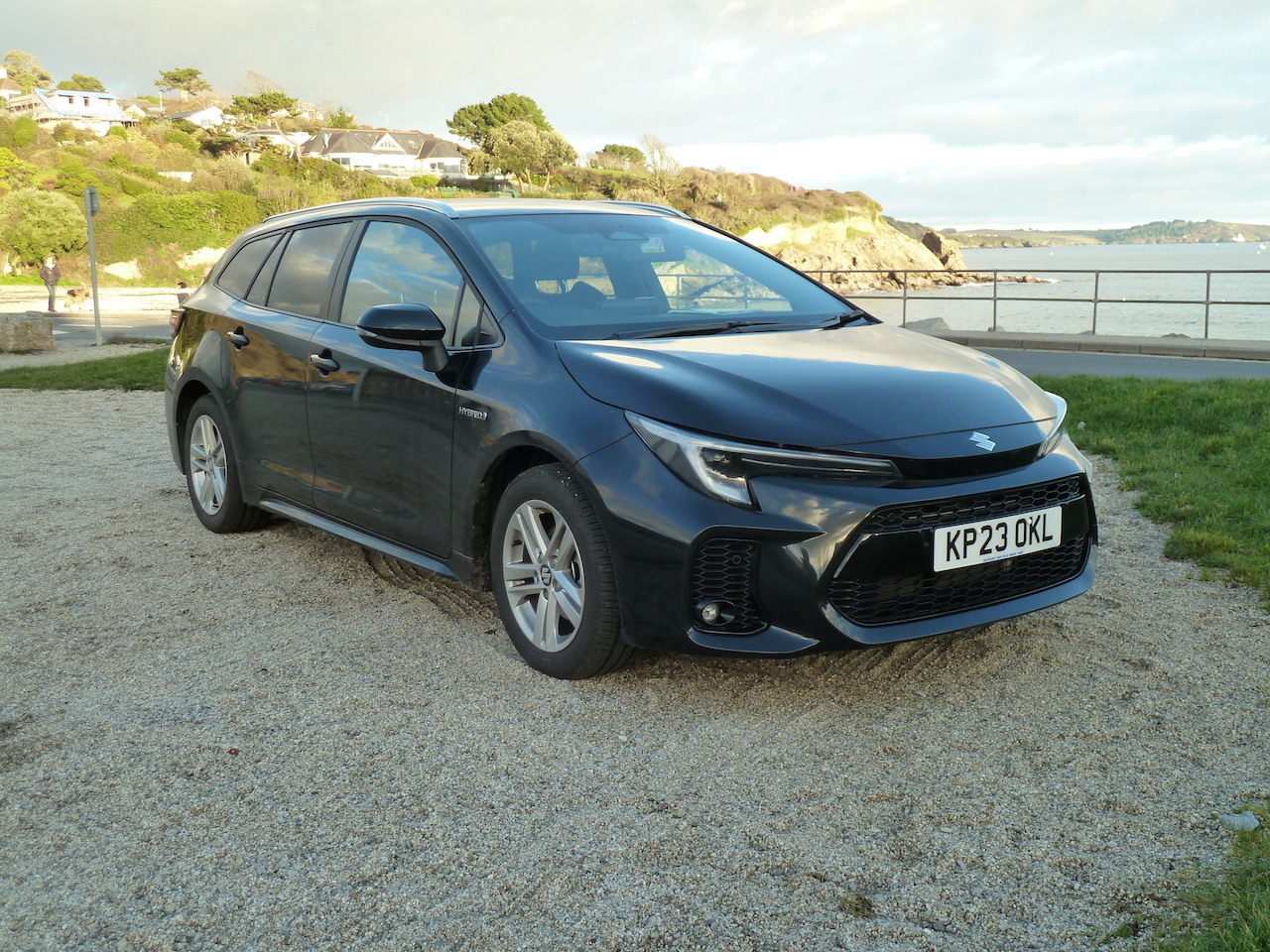
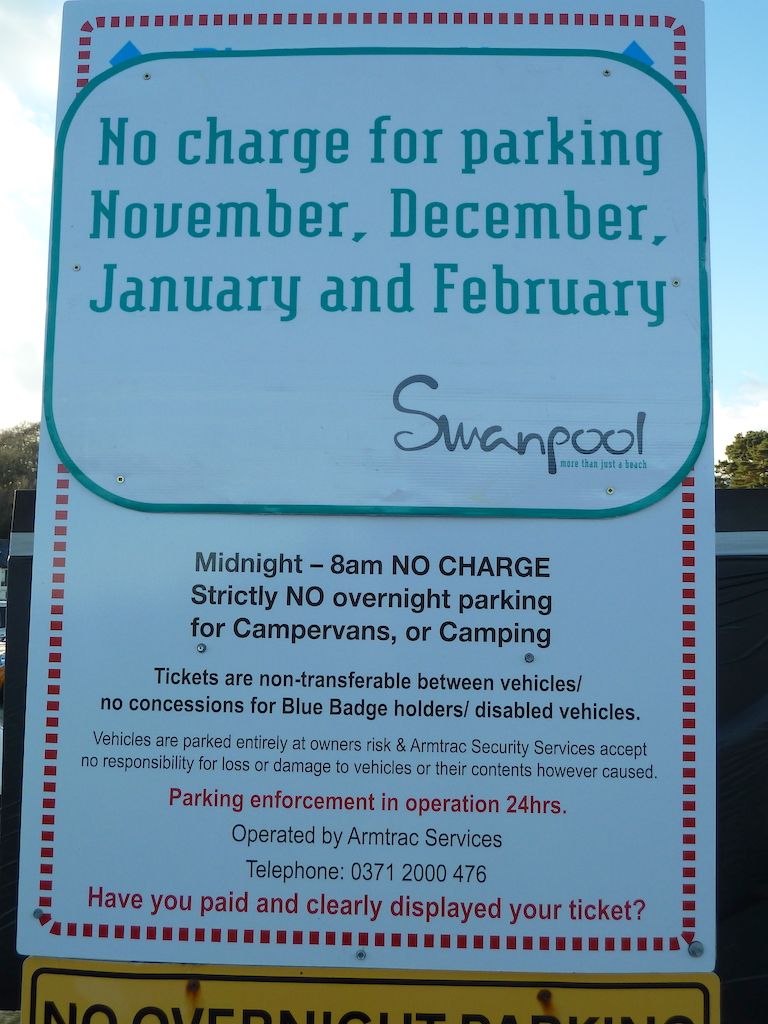
As the afternoon wore on the light began to fade, adding atmosphere to the small settlements of Maenporth, Durgan and Helford Passage, and their respective nearby coastlines. We eventually reached Porth Navas, Constantine and Gweek; in and around these villages we were impressed and cheered by the wide variety of innovative Christmas decorations on display.
As darkness fell we drove eastwards and back to Lostwithiel for our last night in Cornwall before heading for home. Again we admired the multitude of seasonal lights on display along the route, notably including around Truro.
A morning in Lostwithiel, then to Montacute…
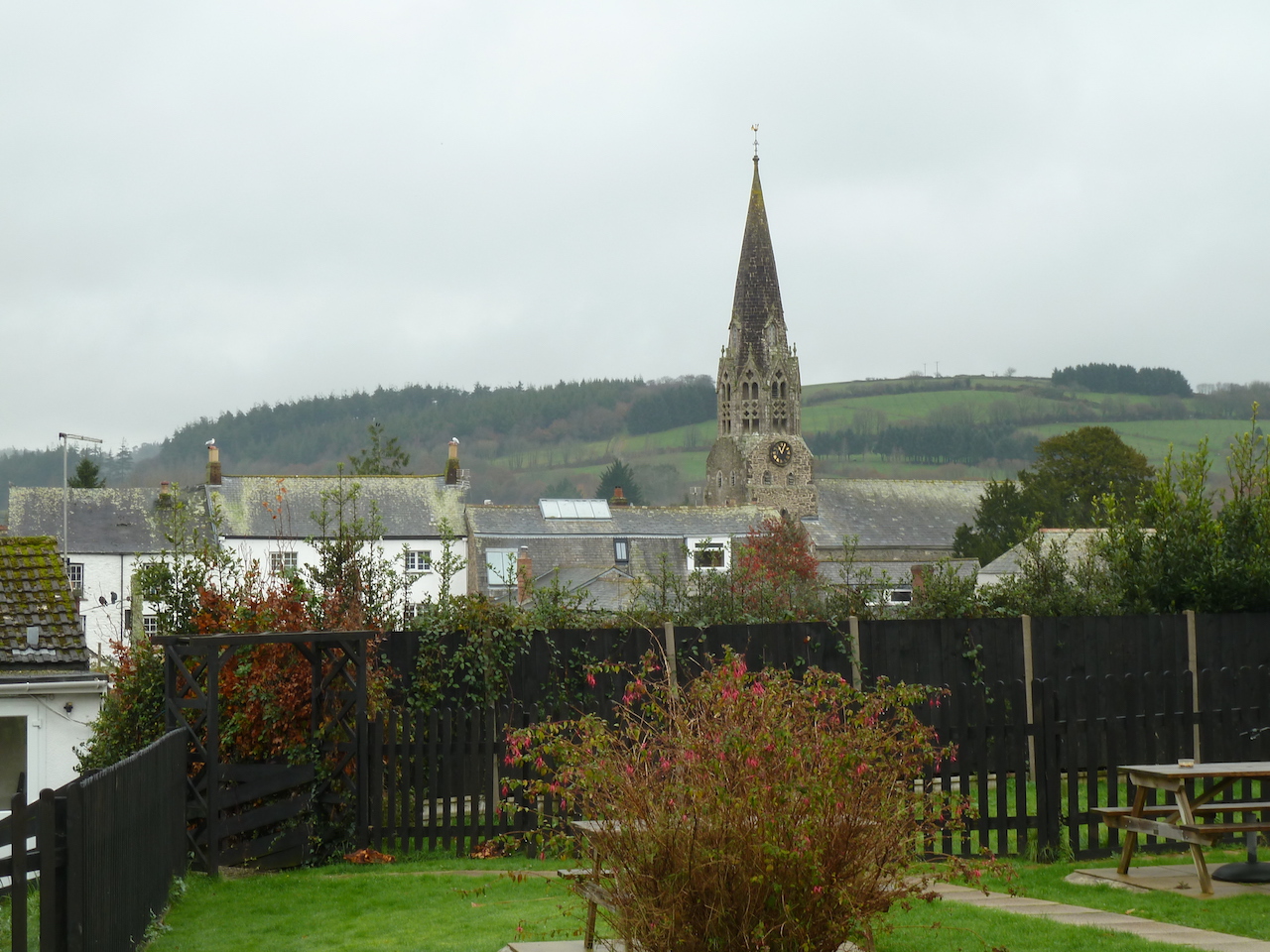
On our third and last day in Cornwall, having repacked the Swace with our luggage, we joined some locally-based friends in Lostwithiel for a chat and lunch, before heading off north-eastwards towards Bodmin, the A38, Exeter and the M5 to Montacute village, near Yeovil.
As always, we were genuinely sad to be leaving Cornwall, but we had enjoyed a happy few days there, and our stay at the Fowey Valley Hotel in Lostwithiel was memorable for the friendliness and calm efficiency of the staff (the breakfasts were superb too!).

We clocked up another 105 miles or so driving from Lostwithiel to Montacute village, where we met with a group of long-standing close friends for an annual pre-Christmas dinner and overnight stay. Again the journey was easy in the Suzuki, and didn’t seem to take long, although in fact we had allocated plenty of travelling time anyway.
The next morning, we explored the fabulous Elizabethan mansion that is Montacute House (National Trust property), and since the temperature outside was only just above freezing, we opted to tour the garden first, followed by the house, then promised ourselves a visit to the café for a warming cuppa.
The house was completed in around 1601 for Sir Edward Phelips, a lawyer and a member of Queen Elizabeth I’s parliament. He was Speaker of the House of Commons, and was involved in the trial of Guy Fawkes (due to the ‘gunpowder plot’). Montacute House was acquired by the National Trust in 1931.
Highlights here included chatting with one of the busy gardeners about how they tame the many hedges, also seeing the ‘reindeer’ around the grounds and in the various buildings – all made from different materials. Somehow we managed to find them all! Pictured below are two of them…
Interesting to us was the ‘knobbly’ yew hedge (as opposed to other hedges on the site which are more traditionally ‘flat-sided’), which the gardener explained had arisen as a result of the very cold winter of 1946/47, when a heavy weight of snow had pressed down on the yew bushes and their branches, forming the amazing shaped we still see today. In the early post-war years there were few gardeners available to trim the hedge, so it was some while before it could be tackled. It was decided to leave the hedge with its unusual but interesting profile.
The ‘old time’ Christmas decorations within the house were good to see, as we warmed up while exploring the ground floor (upstairs rooms were not open when we visited).
Homeward Bound
As we departed from Montacute, a few flakes of snow were falling, and the precipitation intensified as we climbed southwards, high up on the main A37 road between Yeovil and Dorchester. The countryside was rapidly looking like a ‘winter wonderland’ as the grass, trees and bushes lining the road started to turn white.
We halted briefly just off this high road for a coffee from our flask, but didn’t wait around long as the snow was now falling heavily and we are aware that this road can become very treacherous very rapidly in snowy conditions.
In fact as we descended from the plateau to lower levels near Dorchester, the snow turned back to rain and we soon arrived home safely, having covered 750 miles or so in just a week.
The Swace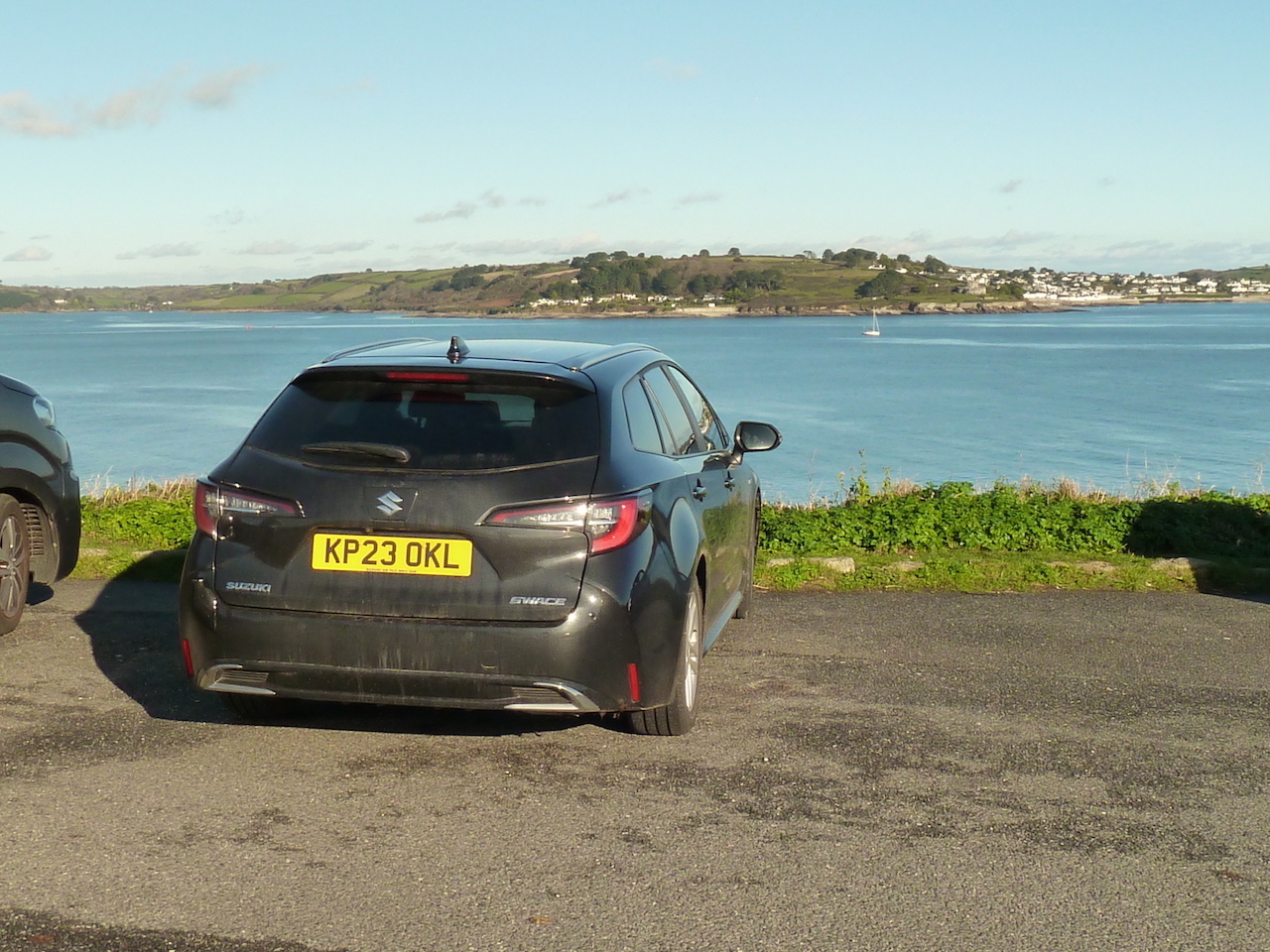
Our test car Suzuki, the ‘revised’ 2023 version of the Swace, had proved to be an ideal automotive companion for our travelling on this festive pre-Christmas adventure, having carried all our luggage with space to spare, also, at times, two more adult passengers (who also enjoyed the car).
Over 750 enjoyable miles it was great to drive, comfortable and returned an average fuel consumption figure of 61.6 miles per gallon (including urban driving and several hours caught in slow-moving traffic queues).
For my full road test and technical specification of the Swace, please go to: suzuki-swace-estate-car-road-test/
VERDICT
We thoroughly enjoyed this busy, yet at the same time entirely relaxing ‘out of season’ winter break in the west country, and found the Swace to be perfect for our trip.
‘Happy days’, as they say!
Note: The National Trust
For many years my wife and I have been members of the National Trust. Membership means that any of the NT properties can be visited without any extra entry or parking charges (apart from some seasonal special events, for example). Thus we were able to visit Cotehele House and Montacute House during this trip, at no cost.
